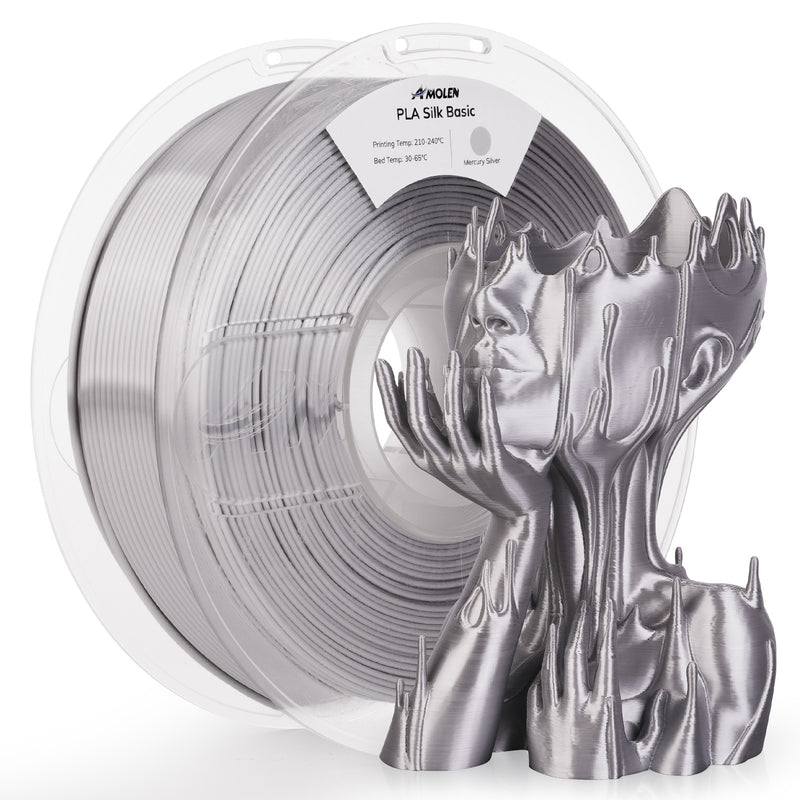Unlocking the Secrets of PLA Filament: Transform Your 3D Printing Experience!
In the dynamic world of 3D printing, PLA filament has emerged as a frontrunner, capturing the attention of hobbyists and professionals alike. PLA, or Polylactic Acid, is prized for its ease of use and versatility across various industries, making it a go-to choice for many. Its significance lies not only in its accessibility but also in its eco-friendly nature, derived from renewable resources like corn starch or sugarcane. As 3D printing technology continues to evolve, understanding the properties, applications, and benefits of PLA filament becomes essential for anyone looking to enhance their printing experience. This article will delve into the unique characteristics of PLA filament, explore its diverse applications, and highlight the reasons why it's favored by so many in the 3D printing community.

Understanding PLA Filament Properties
PLA filament is a thermoplastic made from renewable resources, specifically derived from cornstarch. This plant-based composition gives it a unique profile compared to other filaments. One of the standout properties of PLA is its relatively low melting point, typically around 180-220°C, which makes it easy to print with and ideal for beginners. Furthermore, PLA exhibits excellent layer adhesion, contributing to its overall strength. While it is not as flexible as some other materials, it offers enough rigidity for most applications. However, it does have a tendency to become brittle over time, especially under stress or when exposed to heat. This characteristic is essential to consider when designing and choosing the right filament for a project. In summary, the combination of its biodegradable nature, low melting point, and good layer adhesion makes PLA filament an exceptional material for 3D printing, especially for those just starting their journey.
Applications of PLA Filament
PLA filament's versatility opens the door to a myriad of applications. In educational settings, for instance, teachers are using PLA to create models that help students grasp complex concepts in science and engineering. I remember a friend who is a high school teacher sharing how her students were able to design and print their own mini-bridges using PLA, which not only made the learning process interactive but also fostered creativity. Beyond education, PLA is widely utilized in prototyping, where designers can quickly produce tangible models of their concepts. Artists are also embracing PLA for its vibrant color options, allowing them to create intricate sculptures and designs. Moreover, the growing interest in sustainable practices has led industries to explore PLA for packaging solutions, further showcasing its adaptability. Whether in hobbyist workshops or professional environments, PLA filament continues to bridge the gap between imagination and reality.
Benefits of Using PLA Filament
When it comes to the advantages of PLA filament, several key factors make it a popular choice among 3D printing enthusiasts. First and foremost, its eco-friendliness is a significant draw. As it is derived from renewable resources, using PLA helps reduce the reliance on petroleum-based products. Additionally, PLA filament is incredibly user-friendly; it adheres well to the print bed and has a low tendency to warp, which is particularly beneficial for beginners who are still mastering their printing techniques. The ease of printing with PLA means less frustration and more successful prints. Furthermore, its wide variety of colors and finishes allows for creative expression without the need for extensive post-processing. Many users, including my friend who runs a small 3D printing business, appreciate how PLA allows them to produce high-quality prints quickly and efficiently. Overall, the combination of sustainability, usability, and creative flexibility makes PLA filament a go-to choice for both novice and experienced printers.
Comparisons with Other Filaments
While PLA filament stands out in many respects, it's essential to understand how it compares to other common filaments like ABS and PETG. ABS, although stronger and more impact-resistant, tends to emit fumes during printing and requires a heated bed to prevent warping, making it less beginner-friendly. On the other hand, PETG combines the ease of PLA with the strength of ABS, offering greater flexibility and durability. However, it can be more challenging to print due to its tendency to string and ooze. In summary, while PLA is an excellent choice for beginners and those focused on eco-friendliness, users looking for enhanced durability or specific performance characteristics may find ABS or PETG more suitable for their needs.
Final Thoughts on the Advantages of PLA Filament
In conclusion, PLA filament is a remarkable material that offers a wealth of benefits for 3D printing enthusiasts. Its unique properties, versatile applications, and eco-friendly nature make it an appealing choice for a wide range of projects. From educational models to artistic creations, PLA has proven its place in the 3D printing landscape. As you consider your next project, think about the advantages of PLA filament and how it can transform your printing experience, making it not only more enjoyable but also more sustainable. Embrace the possibilities that PLA filament brings, and let your creativity flourish in the world of 3D printing!








